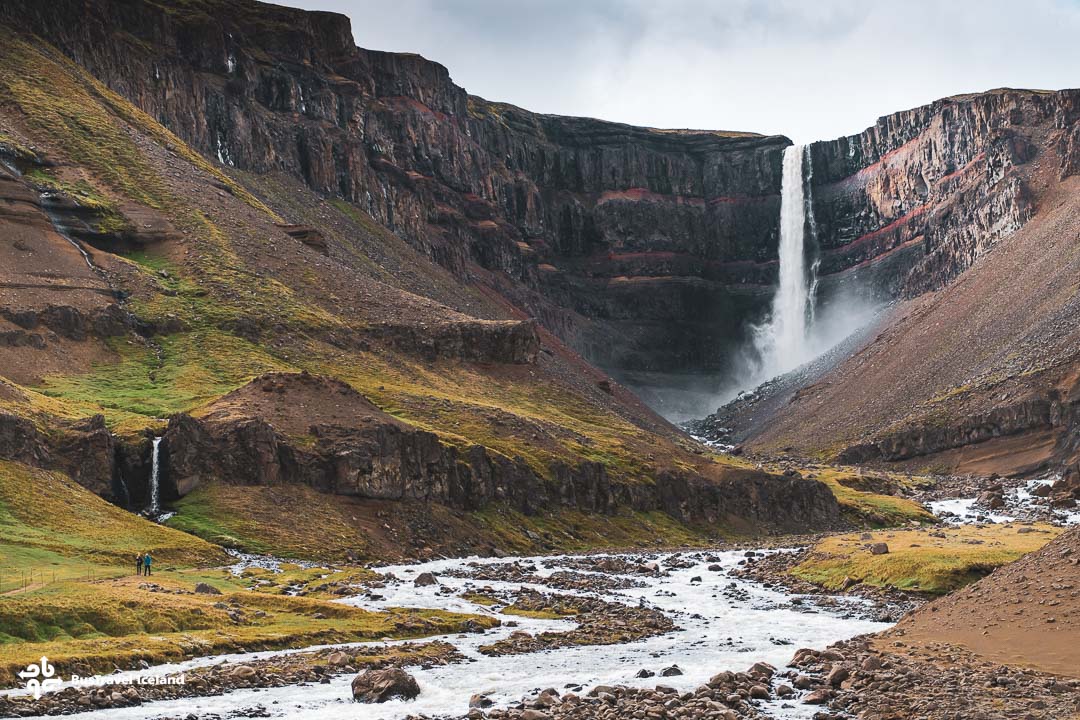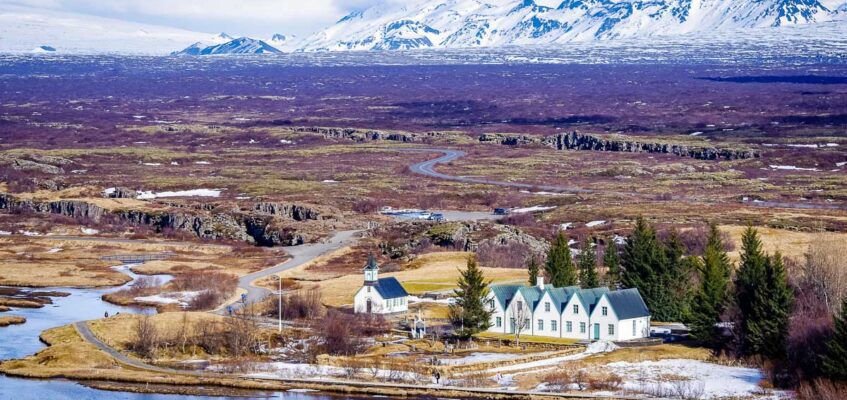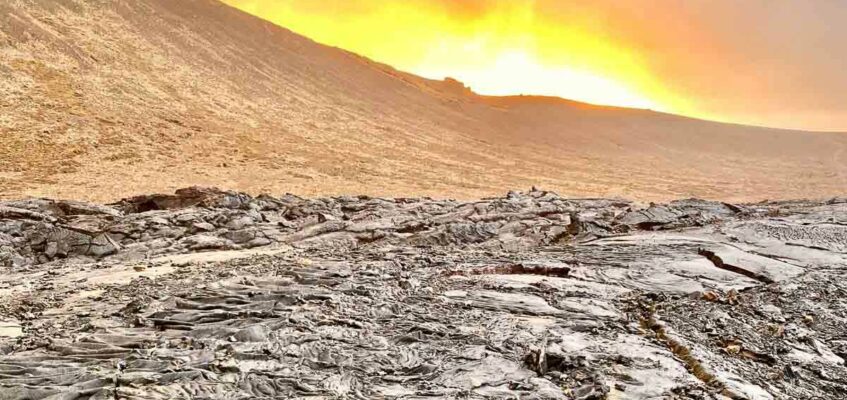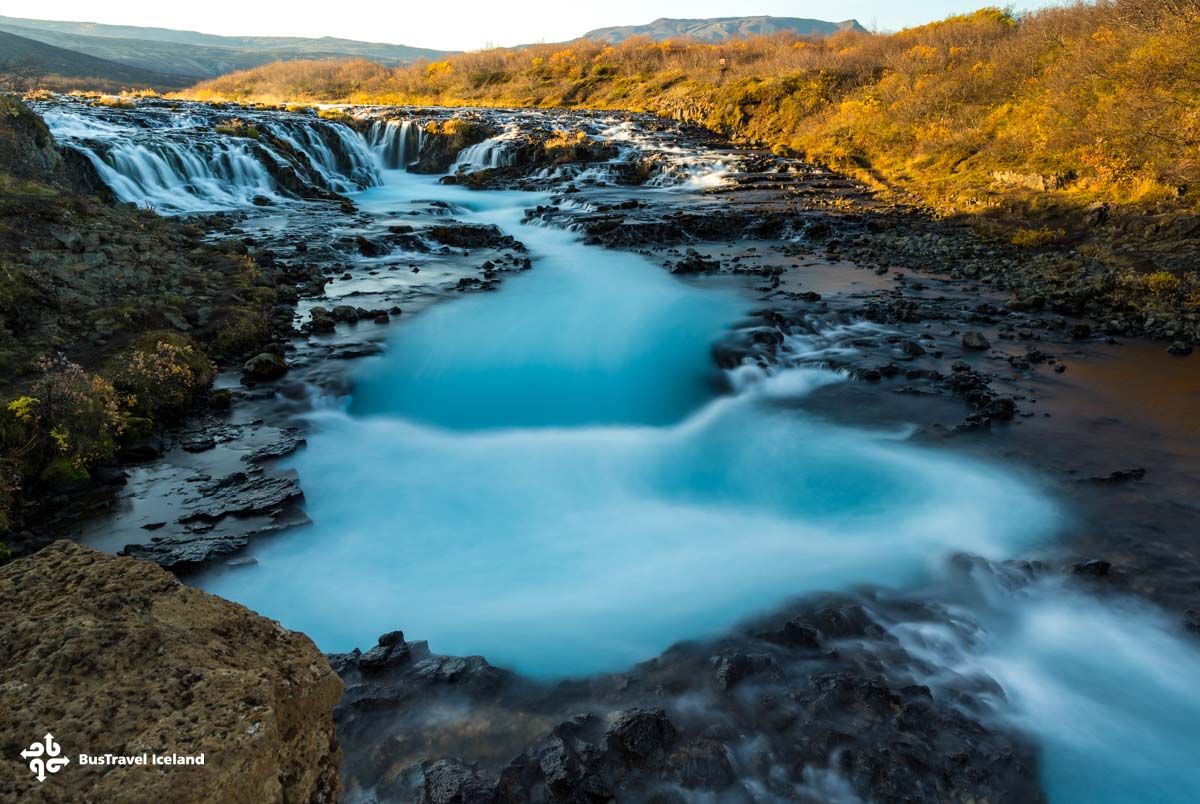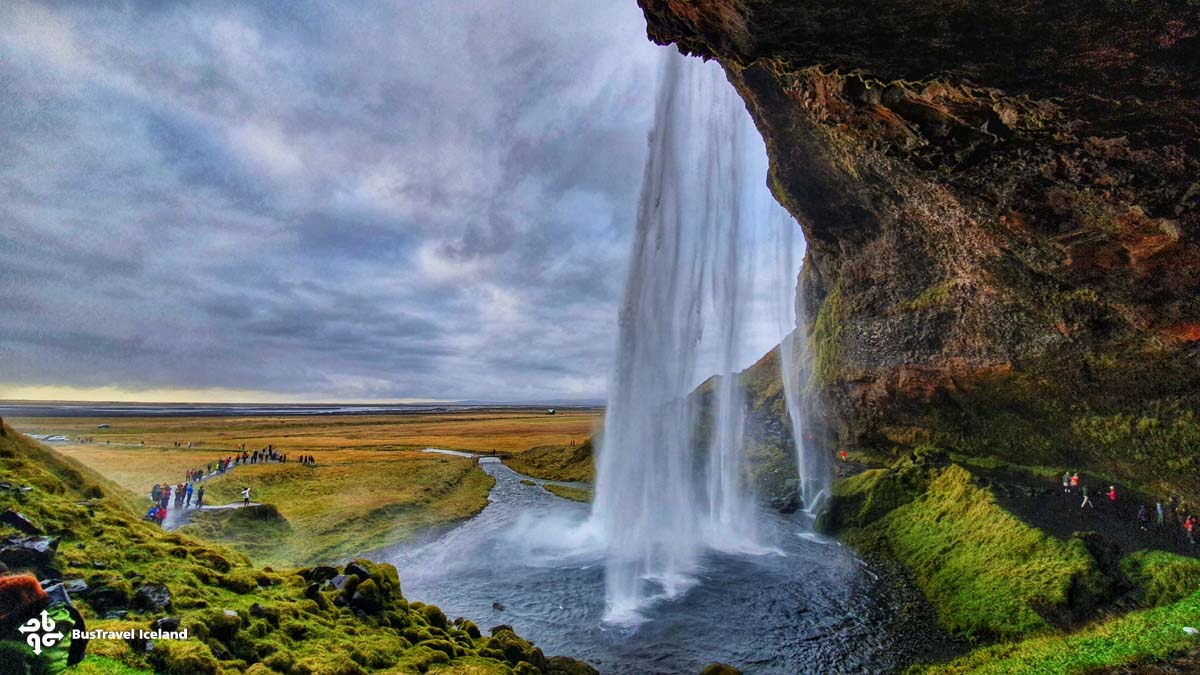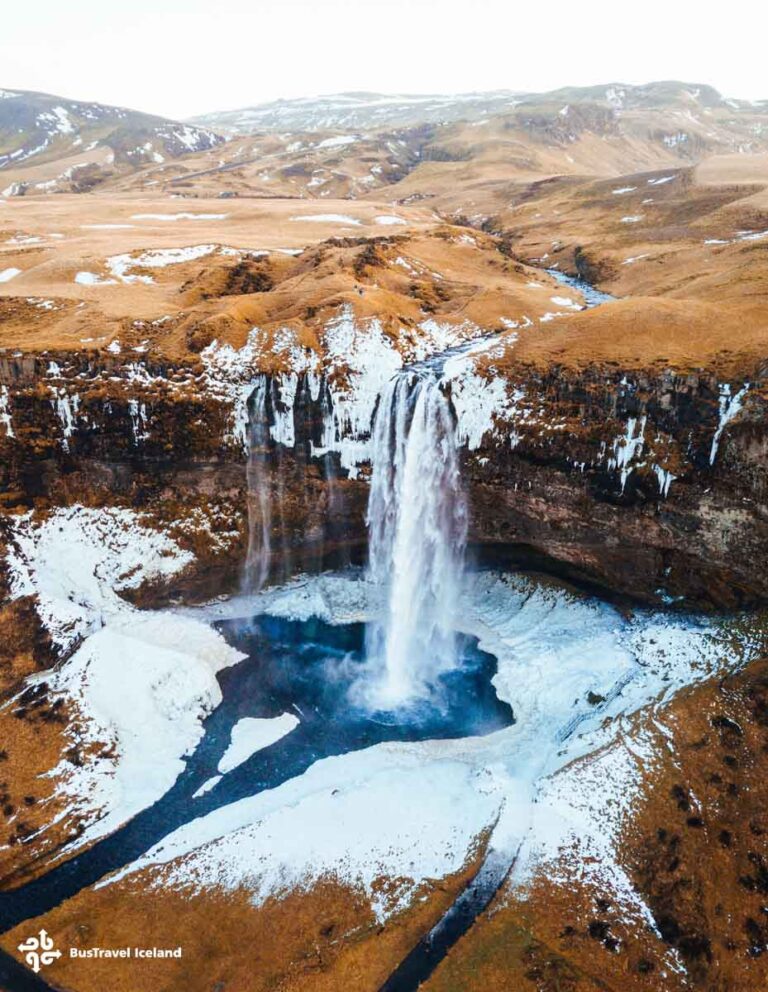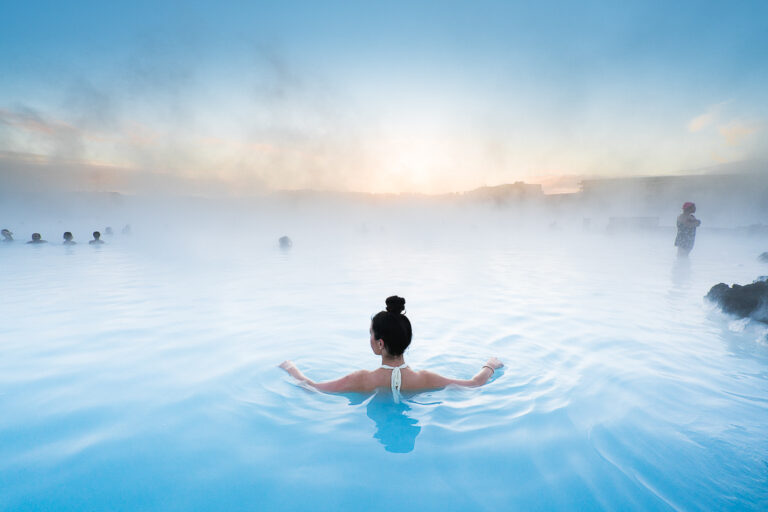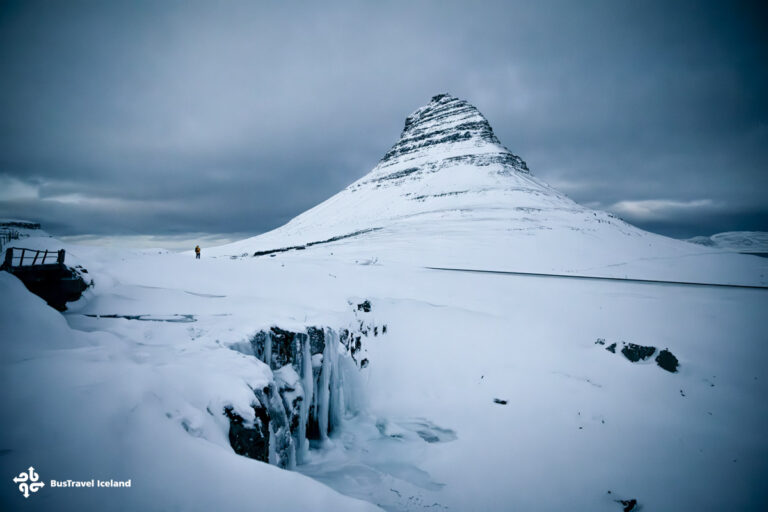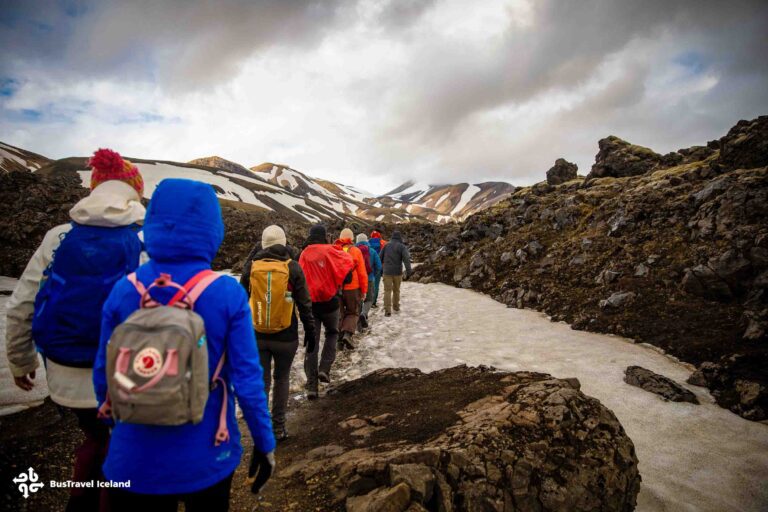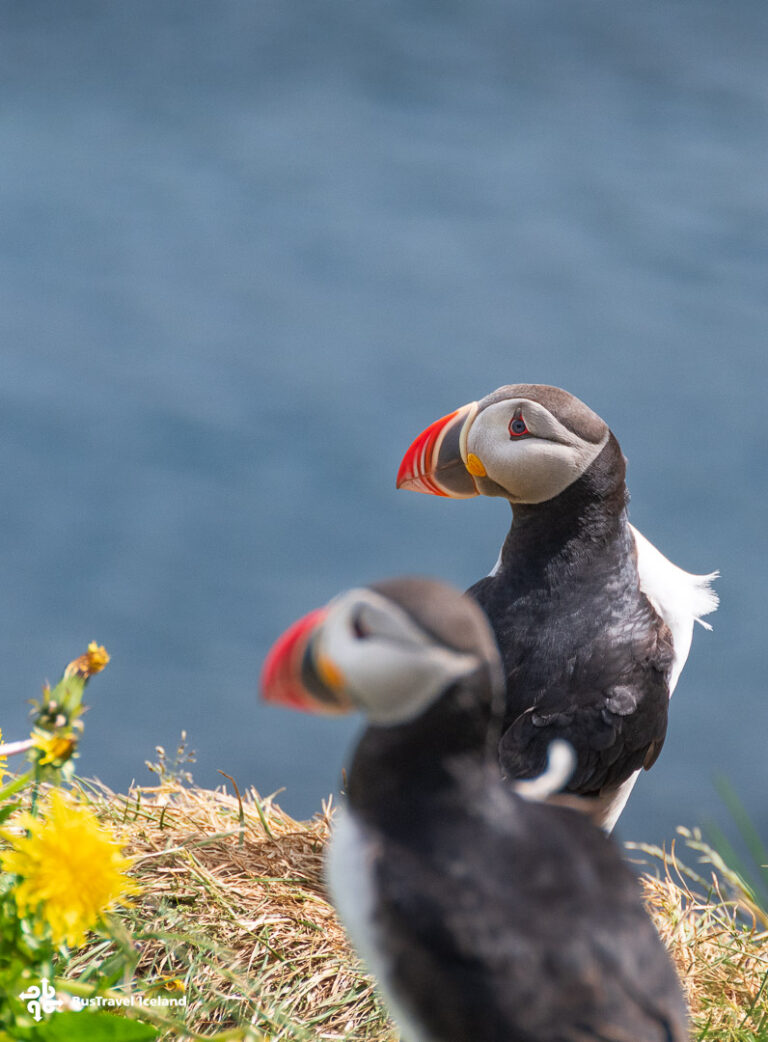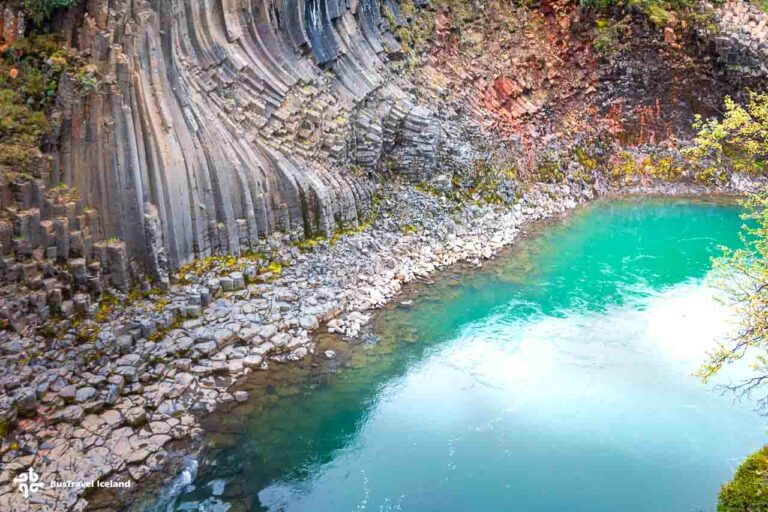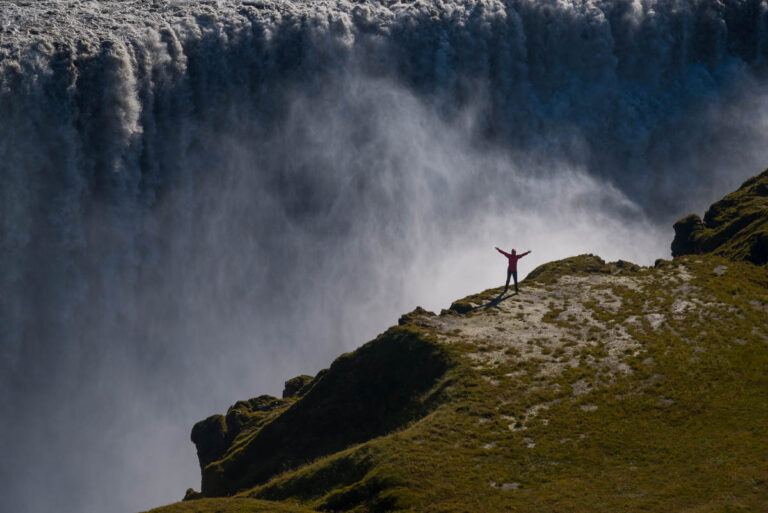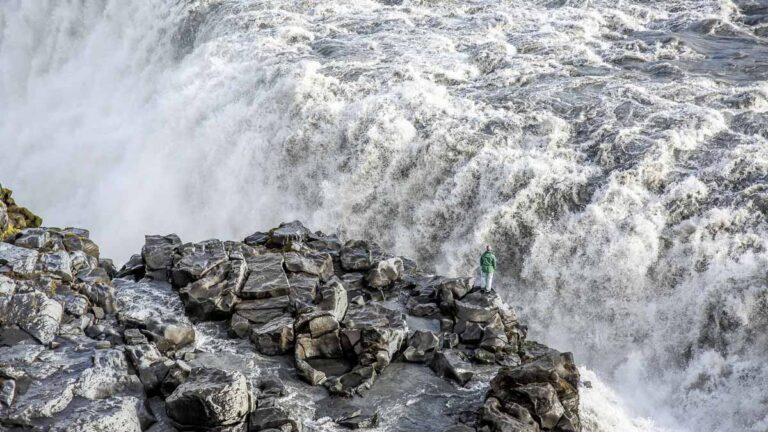Discovering Hengifoss: Iceland’s Striking Red-Banded Waterfall
- East Iceland
- 28 Mar 2025
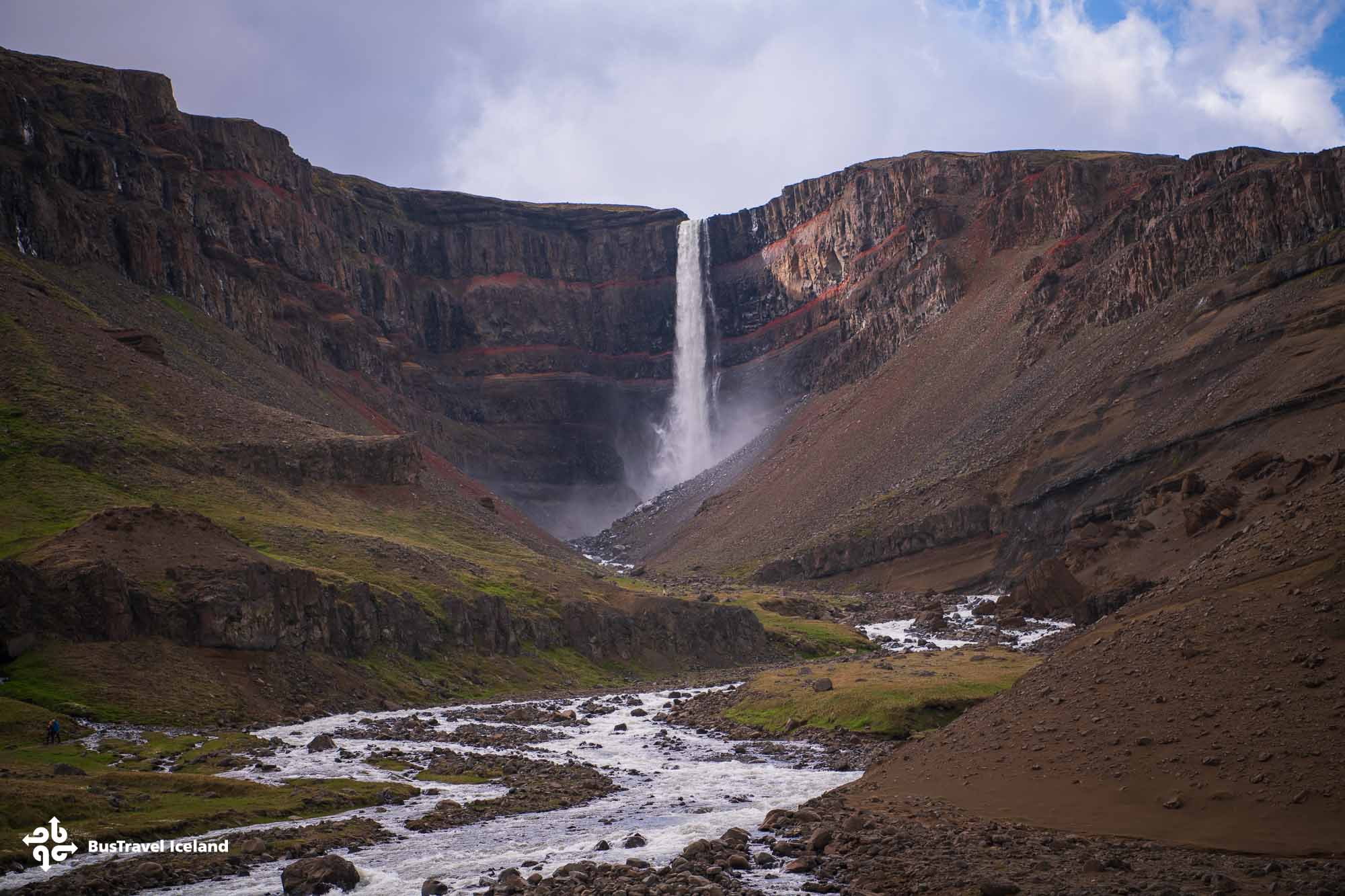
Iceland is a land of breathtaking natural wonders, and among its many waterfalls, Hengifoss stands out as one of the most visually stunning.
Located in East Iceland, this majestic cascade plunges 128 meters (420 feet), making it the third tallest waterfall in the country. What truly sets Hengifoss apart is the striking red and black layers of sedimentary rock that frame the waterfall, telling a geological story millions of years in the making.
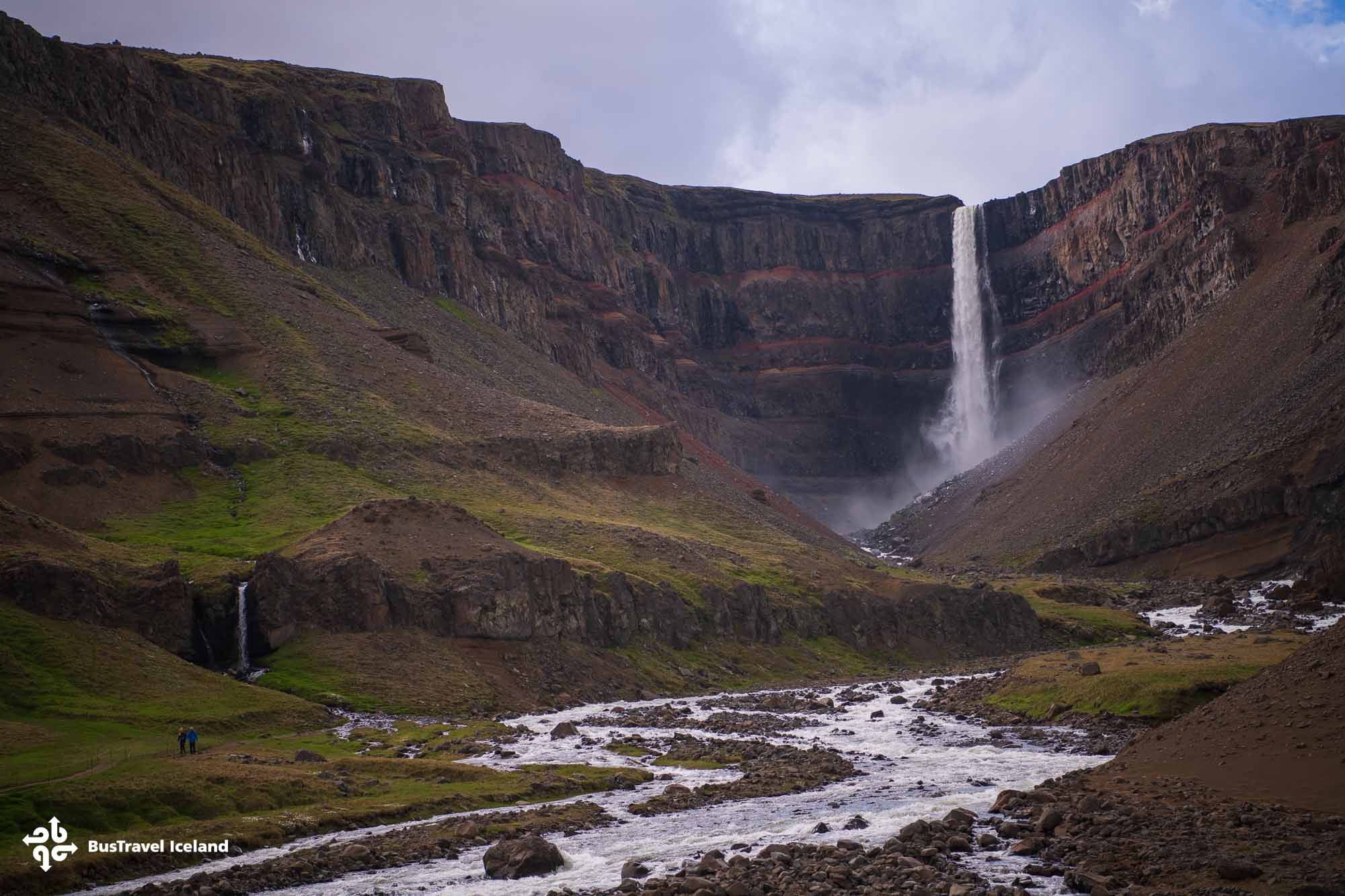
The Geological Formation of Hengifoss
Hengifoss is not just a beautiful waterfall—it is also a window into Iceland’s volcanic past. The red bands seen in the rock layers surrounding the waterfall are formed by iron-rich clay trapped between layers of basaltic lava flows. These layers date back to the Tertiary period, over five million years ago, when volcanic activity dominated the region. Each layer represents a different phase of volcanic eruptions, with the red hues emerging due to oxidation processes that occurred as the lava cooled and weathered over time. This striking contrast between the dark basalt and the red clay is a unique geological feature that makes Hengifoss one of the most recognizable waterfalls in Iceland.
The Hengifossá River, which feeds the waterfall, originates from the Vatnajökull glacier, the largest glacier in Europe. Over thousands of years, glacial meltwater and erosion carved out the valley, shaping the dramatic cliffs that now frame Hengifoss. The continuous erosion of the basalt and sedimentary layers ensures that the waterfall and its surroundings are constantly evolving, further adding to its geological significance.
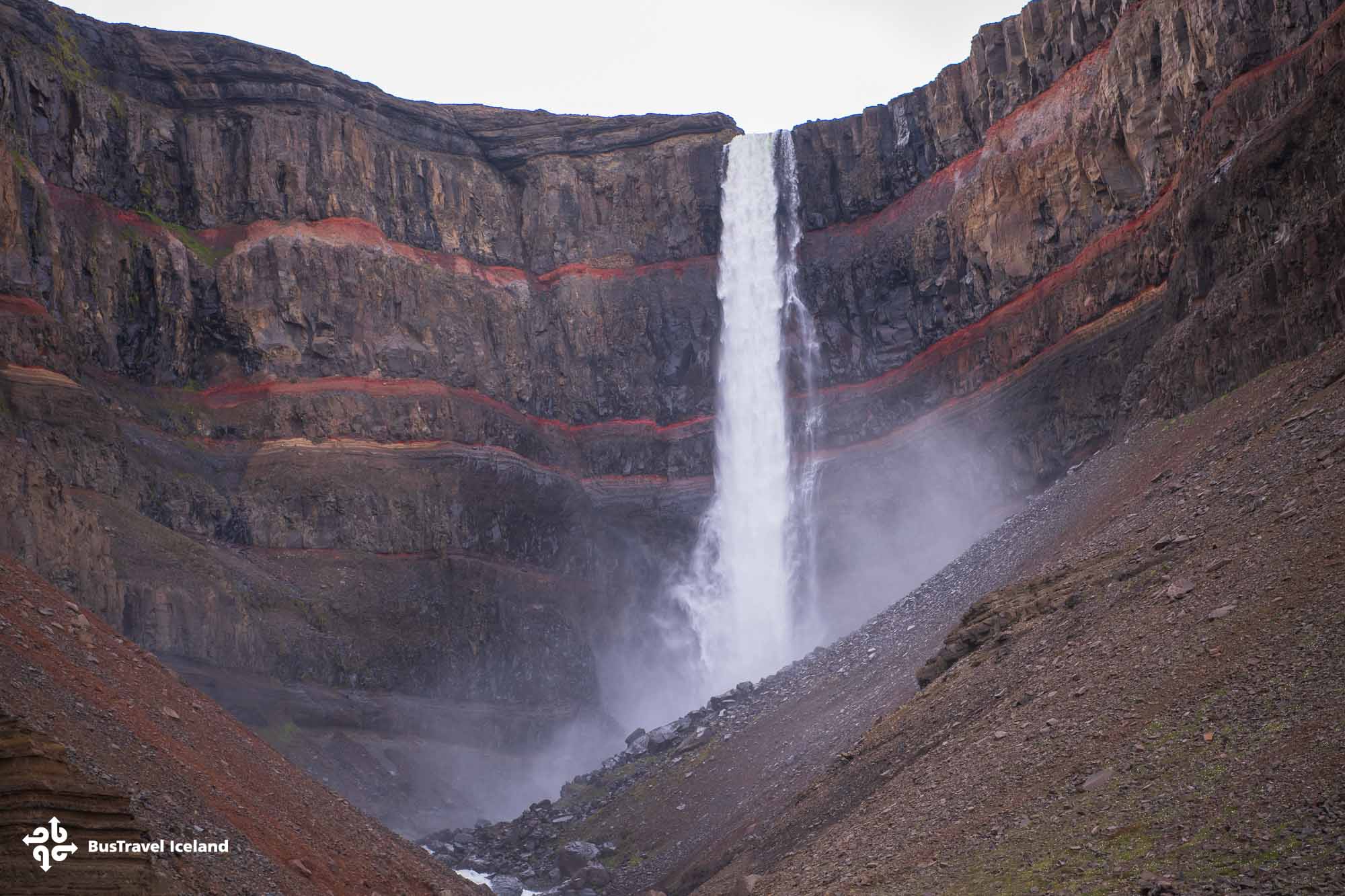
Getting To Hengifoss Waterfall
Hengifoss is situated near Egilsstaðir, the largest town in East Iceland. The drive from Egilsstaðir to the Hengifoss parking area takes about 30 minutes, following Route 931 along the edge of Lake Lagarfljót. Once at the parking area, visitors embark on a moderate hike of approximately 2.5 kilometers (1.5 miles) to reach the falls. The hike is well-marked and takes about 45-60 minutes, offering breathtaking views of the surrounding highlands and another beautiful waterfall, Litlanesfoss, along the way.
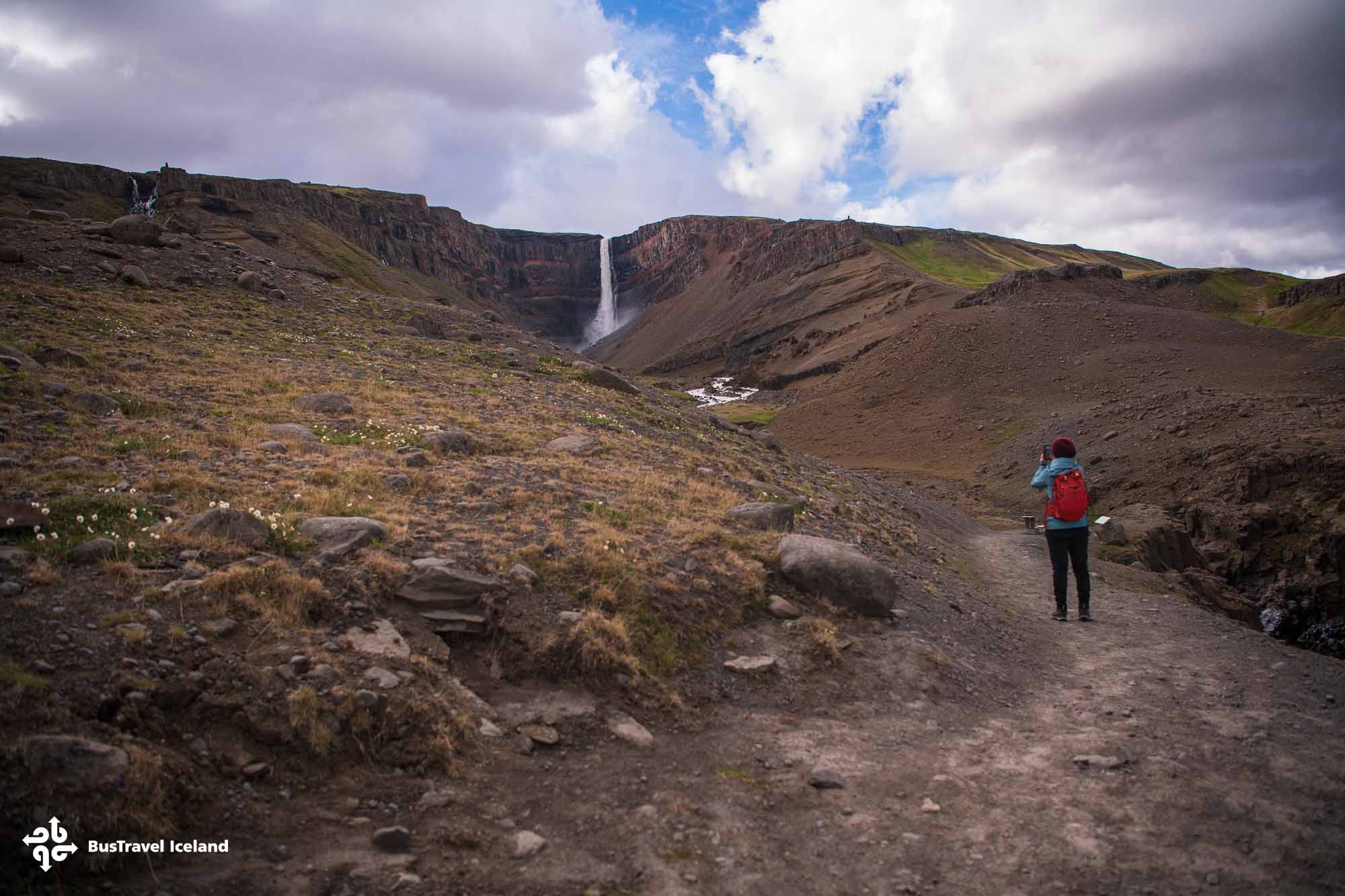
The Hike and the View
The trek to Hengifoss is a rewarding adventure in itself. As you ascend the trail, you’ll pass Litlanesfoss, an equally mesmerizing waterfall flanked by towering basalt columns. These hexagonal rock formations create a dramatic natural amphitheater, providing the perfect prelude to the grandeur of Hengifoss.
As you approach Hengifoss, the landscape transforms into a geological marvel. The alternating layers of red clay and dark basalt reveal the volcanic history of the region. The contrast of the deep red stripes against the cascading white waters of the falls creates an almost surreal scene, perfect for photography and nature appreciation.
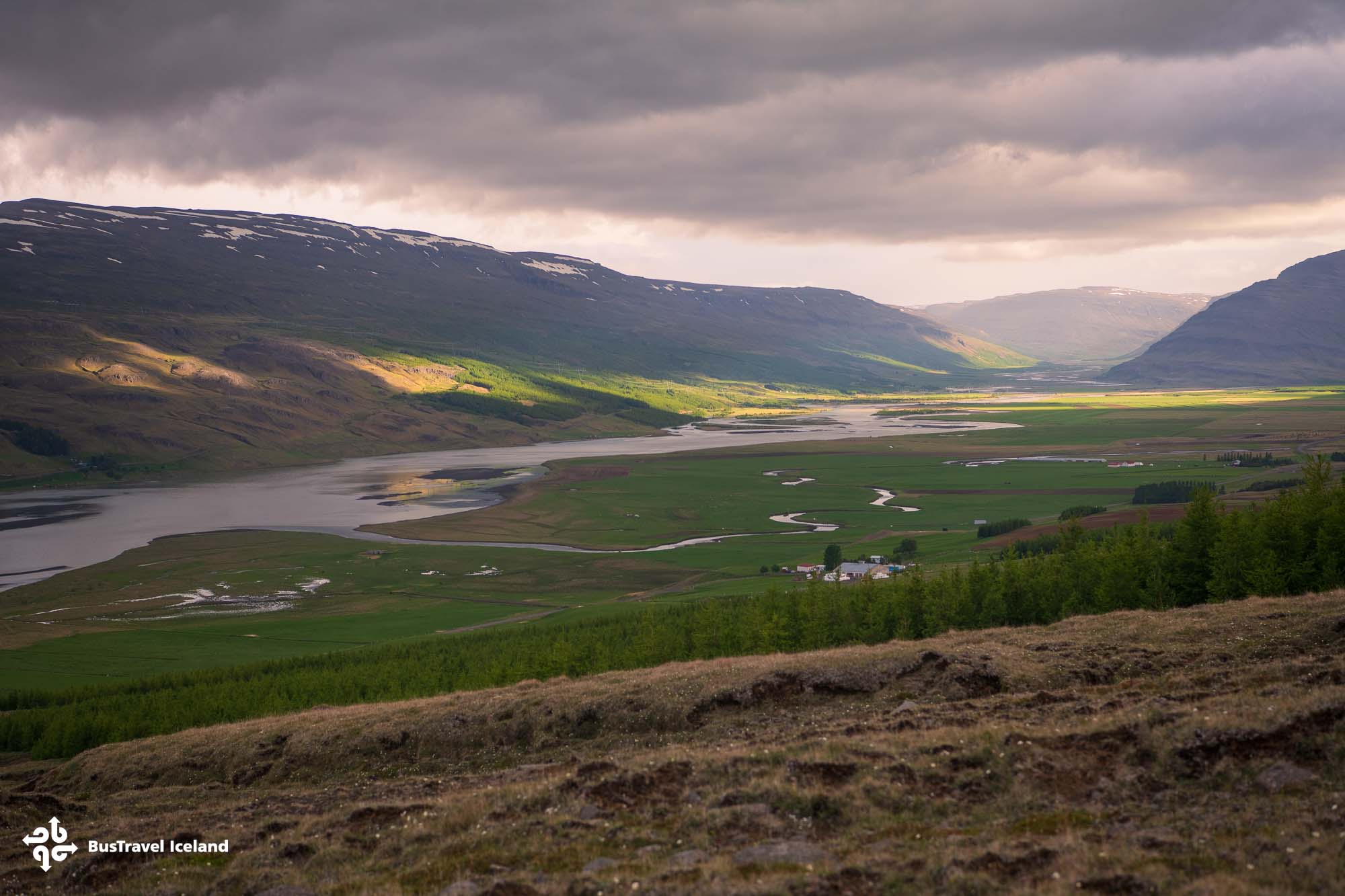
Exploring the Region: Attractions and Nearby Towns
The area surrounding Hengifoss is rich in natural beauty, cultural heritage, and charming towns that offer unique experiences. Along the hike, you’ll pass Litlanesfoss, a stunning waterfall framed by towering basalt columns, creating a striking visual contrast. Nearby, Lake Lagarfljót stretches alongside the region, famous for the legendary Lagarfljót Wyrm, an Icelandic sea serpent said to inhabit its depths.
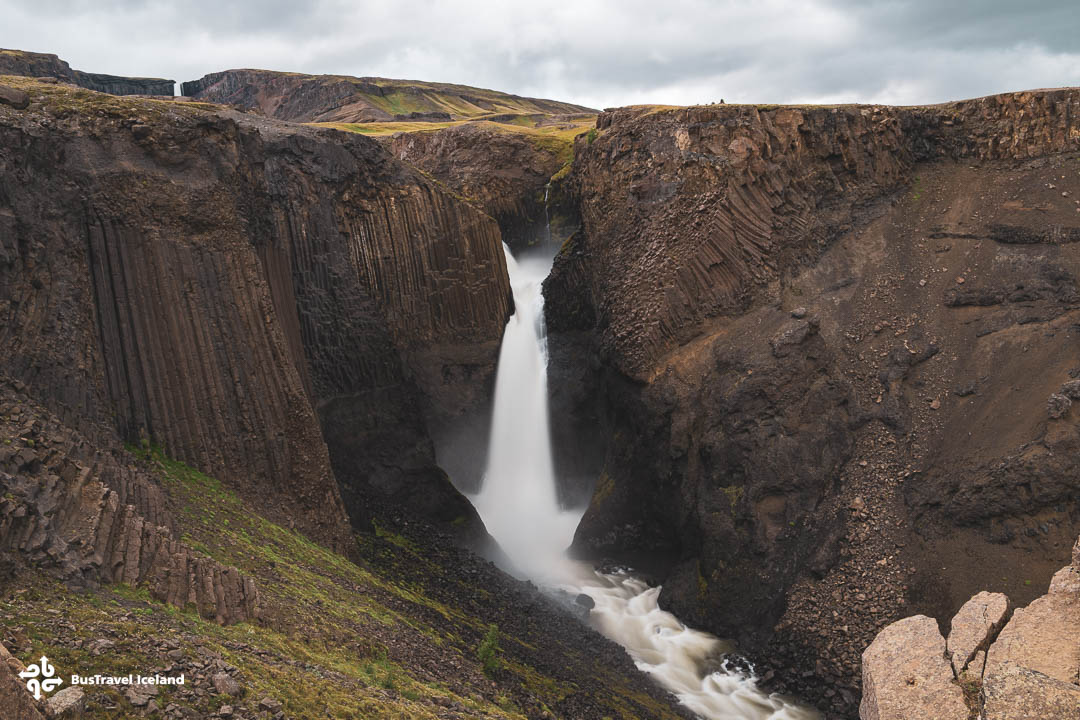
For nature lovers, Hallormsstaðaskógur Forest, Iceland’s largest forest, offers scenic trails, diverse plant life, and peaceful picnic areas along the shores of Lagarfljót. Those interested in history can visit Skriduklaustur, the former home of Icelandic writer Gunnar Gunnarsson, now a cultural center with exhibitions and a cozy café. Just a short drive away, Vatnajökull National Park showcases glaciers, volcanic landscapes, and dramatic scenery, making it a must-visit for adventurers.

Other notable destinations in the broader region include Dettifoss, Europe’s most powerful waterfall, located in the northern part of Vatnajökull National Park. Nearby, the Mývatn area is known for its volcanic craters, geothermal activity, and rich birdlife. Studlagil Canyon, with its stunning basalt column formations and turquoise waters, is another geological marvel located within driving distance. Along the coast, Djúpivogur, a small fishing village, offers artistic charm and beautiful coastal scenery, while Höfn, further south, is renowned for its lobster cuisine and panoramic views of the Vatnajökull glacier.

Nature lovers and hikers should also consider a trip to Borgarfjörður Eystri, a remote and picturesque village surrounded by colorful rhyolite mountains and dramatic coastlines. It’s one of the best places in Iceland to spot puffins during the summer and explore lesser-known hiking trails in the Dyrfjöll mountain range.
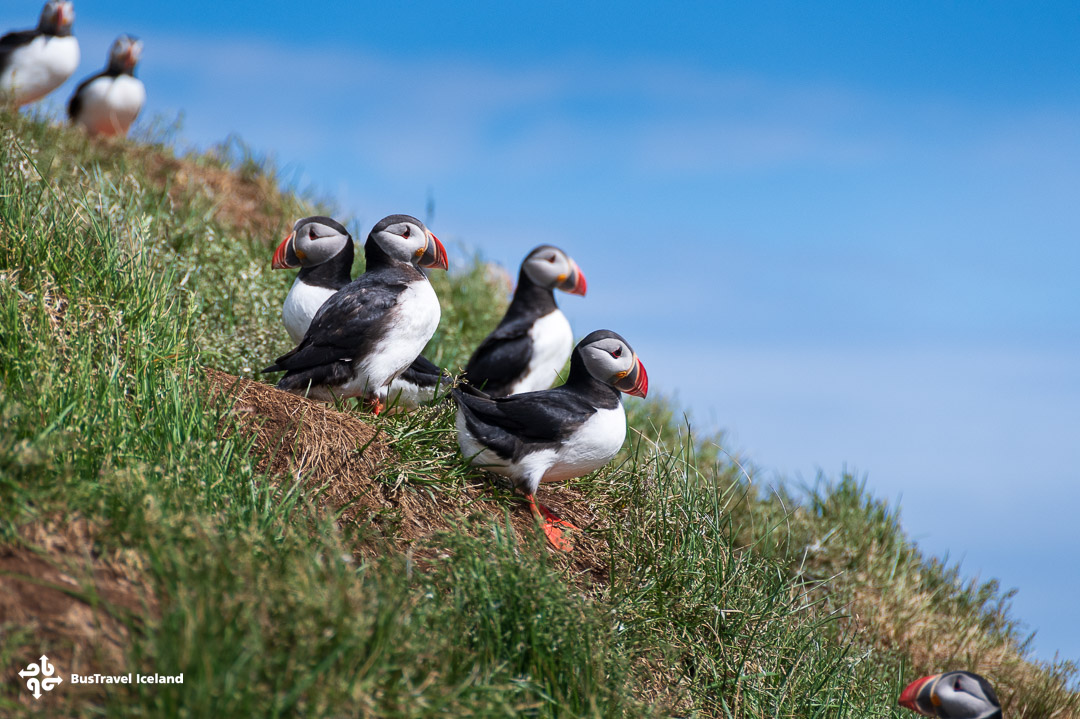
The closest town to Hengifoss is Egilsstaðir, the largest settlement in East Iceland. It serves as a central hub for travelers, offering accommodations, restaurants, and essential services. Egilsstaðir is also home to Vök Baths, a unique geothermal spa featuring floating pools on Lake Urriðavatn. These naturally warm pools provide a relaxing experience, surrounded by serene Icelandic landscapes.
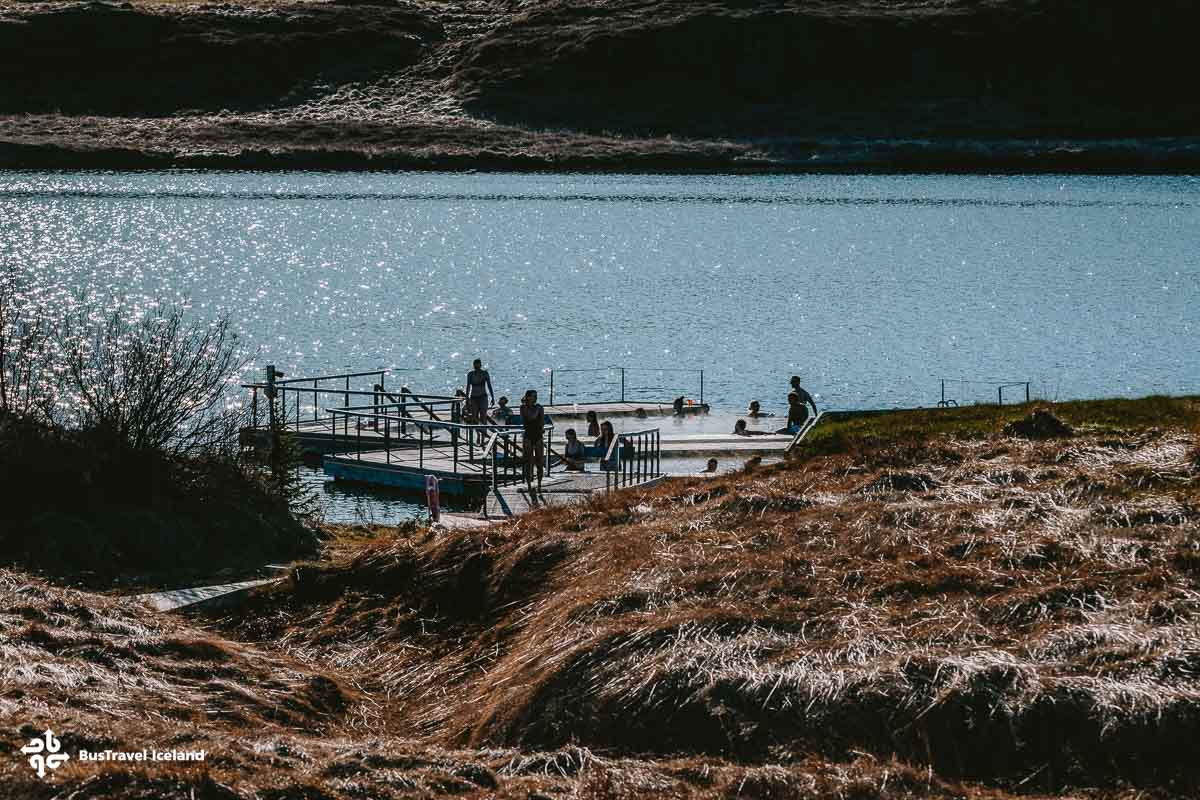
For those looking to explore further, the small fishing village of Seyðisfjörður, located about an hour’s drive from Hengifoss, is worth a visit. Known for its colorful houses, thriving arts scene, and picturesque fjord setting, Seyðisfjörður is a charming stop for culture and history enthusiasts.
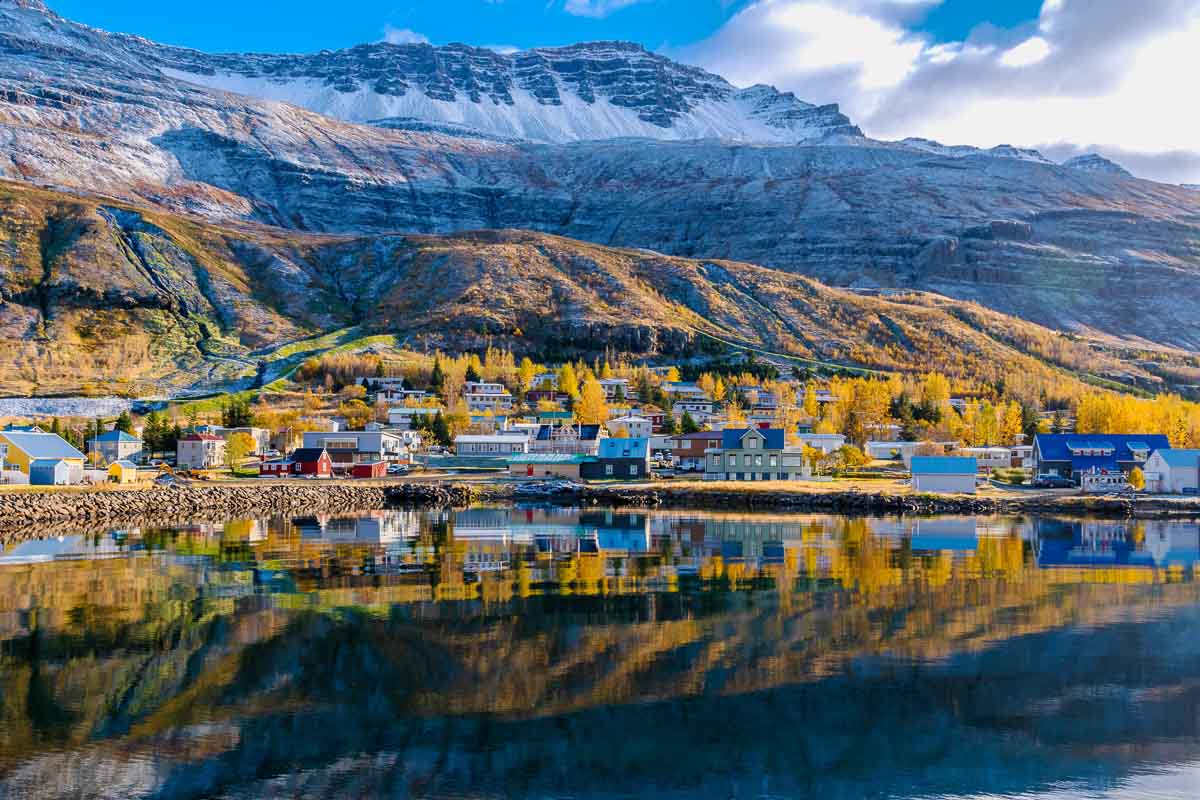
Best Time to Visit
The best time to visit Hengifoss is during the late spring to early autumn months (May to September), when the trails are clear of snow, and the weather is more favorable for hiking. However, visiting in the winter months can provide a different kind of magic, with frozen landscapes adding an ethereal charm.
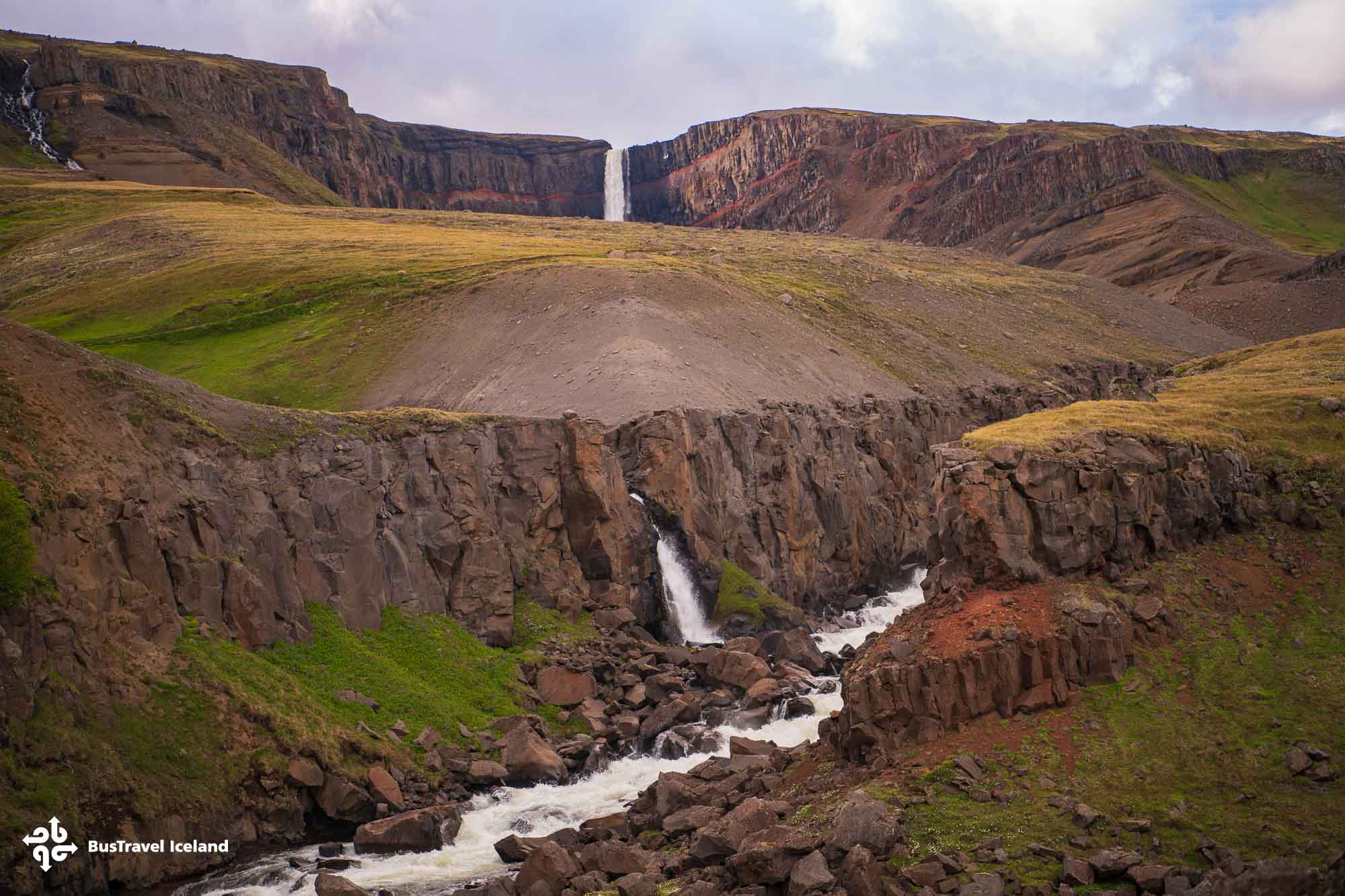
Tips for Visiting Hengifoss
- Wear sturdy hiking shoes – The trail is steep in sections and can be muddy after rainfall.
- Dress in layers – Icelandic weather is unpredictable, so be prepared for sudden changes.
- Bring a camera – The dramatic rock formations and the waterfall itself are incredibly photogenic.
- Start early – Arriving in the morning helps avoid crowds and allows for a more serene experience.
- Respect nature – Stick to marked paths to preserve the delicate environment around the falls.
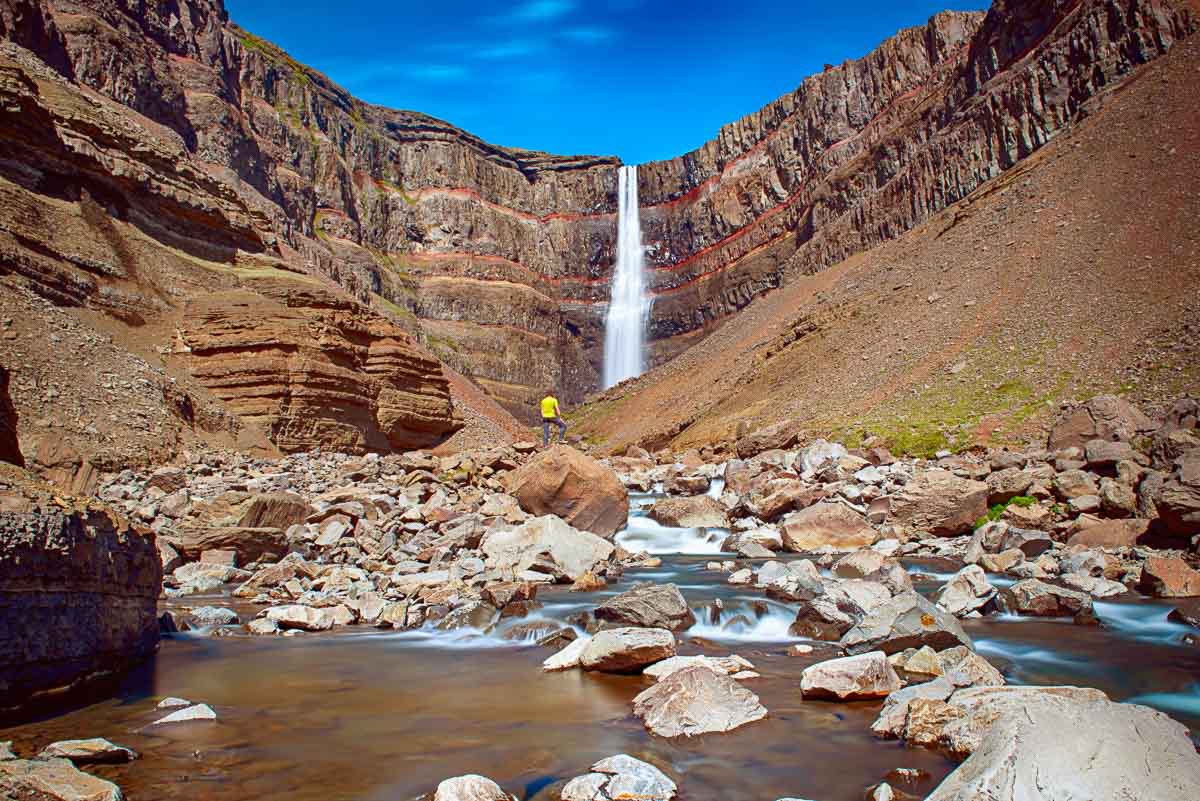
Why You Should Hengifoss Waterfall
Hengifoss is more than just a waterfall—it’s a journey through Iceland’s geological and natural history. Whether you’re an avid hiker, a geology enthusiast, or simply someone looking for an unforgettable sight, Hengifoss is a must-visit destination that showcases the raw beauty of Iceland’s landscapes. So, lace up your hiking boots and get ready to experience one of Iceland’s most captivating waterfalls!
